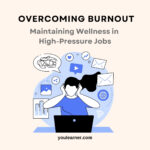Why Evaluation Criteria Matter More Than Ever
Whether you’re hiring a new team member, choosing a software vendor, awarding a project, or even evaluating student performance—your evaluation criteria define the fairness, consistency, and success of the outcome.
Yet, in many organizations, evaluation remains subjective, inconsistent, or worse—political. Developing strong evaluation criteria is not just about having a checklist. It’s about establishing a transparent, replicable, and data-informed process that aligns with your strategic goals and values.
In this blog post, we’ll dive into the leading practices in evaluation criteria development—with real-world use cases, frameworks, and tips that you can immediately apply.
📌 1. Start With the End in Mind: Define the Decision Objective
What Are You Really Trying to Decide?
Before building criteria, clarify your purpose. Ask:
- What decision are we making?
- What impact will it have?
- Who will use the results, and how?
Example:
If you’re selecting a learning management system (LMS), your goal isn’t just to pick a tool—it’s to enhance learner engagement and reporting efficiency.
Align Criteria With Outcomes
Ensure every criterion contributes directly to your final goal. If it doesn’t—cut it.
🛠️ 2. Use the SMARTER Framework for Criteria Design
Every criterion should be:
- Specific – Clear and unambiguous
- Measurable – Quantifiable or assessable
- Achievable – Realistic to assess and meet
- Relevant – Tied to the decision goal
- Time-bound – If time is a factor
- Evidence-based – Grounded in observable behavior/data
- Reviewable – Easy to audit or revise
⚖️ 3. Choose Evaluation Methods That Fit the Context
Common Methods:
| Method | Best Used For | Example |
|---|---|---|
| Scoring Matrix | Quantitative decisions | Vendor selection |
| Rubric-Based | Subjective or performance-based | Student essays |
| Checklist | Pass/fail or compliance | Quality assurance |
| Pairwise Comparison | Prioritizing competing options | Project features |
| Weighted Scoring | When some criteria are more important | Hiring decisions |
🧠 4. Involve Diverse Stakeholders Early
Why?
Different stakeholders bring unique perspectives—and biases. Including a cross-functional group:
- Improves objectivity
- Enhances buy-in
- Surfaces blind spots
Who to Involve:
- Decision makers
- End users
- Subject matter experts
- Legal/Compliance (when necessary)
📝 5. Define Each Criterion Clearly—Avoid Ambiguity
Poor:
“Strong communication skills”
Better:
“Presents ideas clearly during meetings, responds promptly and professionally to emails, and adapts language for diverse audiences”
Add:
- A description
- Indicators of excellence
- Examples of what success looks like
🔢 6. Weight Your Criteria Strategically
Not all criteria should be equal. Assign weights based on:
- Strategic priorities
- Risk factors
- Deal-breakers vs. nice-to-haves
Example:
In hiring a data analyst:
- Technical skills – 40%
- Communication – 25%
- Problem-solving – 20%
- Culture fit – 15%
Use weighted scoring matrices to guide your process.
🎯 7. Pilot Test the Criteria Before Final Rollout
Run a mock evaluation using past data or case examples:
- Did the criteria highlight the best options?
- Were scores consistent across evaluators?
- Any surprises or red flags?
This helps refine ambiguous or overlapping criteria before it counts.
🧩 8. Use Rubrics to Reduce Subjectivity
A rubric breaks a criterion into levels of performance.
Example Rubric for “Presentation Quality”:
| Level | Description |
|---|---|
| 1 – Poor | Disorganized, unclear, frequent errors |
| 2 – Fair | Some organization, limited clarity |
| 3 – Good | Clear, mostly organized, few errors |
| 4 – Excellent | Well-structured, engaging, error-free |
This allows evaluators to assess performance with greater consistency.
📊 9. Capture Data From the Evaluation Process
Track not just the final scores but:
- Rationale for scores
- Comments or concerns
- Who scored what
This data:
- Supports transparency
- Helps in audits
- Aids continuous improvement
Use forms, spreadsheets, or specialized tools like Evalato, Submittable, or even Google Forms integrated with Sheets.
📈 10. Evaluate the Evaluators
Set up regular calibration sessions:
- Compare scores across evaluators
- Address scoring inconsistencies
- Reinforce criteria interpretation
You can also track patterns:
- Are certain evaluators consistently more lenient or harsh?
- Are certain criteria misunderstood?
💡 11. Use Technology to Your Advantage
Tools That Can Help:
- Survey tools: Google Forms, Typeform (for scoring)
- Spreadsheets: Weighted scoring models in Excel/Sheets
- Evaluation platforms: Submittable, Reviewr, Evalato
- LMS/ATS: For performance and recruitment evaluations
Automation ensures consistency, faster analysis, and cleaner documentation.
📚 12. Document Everything for Repeatability
Create a Criteria Handbook that includes:
- Decision goals
- Scoring rubrics
- Definitions
- Evaluation forms/templates
This becomes your organization’s go-to reference and helps future teams avoid reinventing the wheel.
🛑 13. Avoid Common Pitfalls
- ❌ Overcomplicating criteria – too many or overly nuanced
- ❌ Ignoring biases – especially affinity or confirmation bias
- ❌ Failing to test – launching criteria that look good but don’t work
- ❌ Over-relying on gut feeling – especially in interviews or reviews
- ❌ Unbalanced weighting – giving equal weight to trivial and critical elements
🧭 14. Case Studies: What Leading Organizations Do
📍 Google – Structured Hiring
Google uses pre-defined rubrics and structured interviews with anchored rating scales, reducing interviewer bias and increasing diversity in hires.
📍 Gates Foundation – Grant Evaluation
Uses detailed scoring matrices with panel calibration to ensure alignment across global grant reviewers.
📍 Government Procurement – Vendor Scoring
RFPs include detailed criteria and weighted scoring, often with external reviewers to reduce internal pressure.
🛤️ 15. Continuous Improvement Loop
Every evaluation should improve the next one.
Ask:
- What worked well in our evaluation criteria?
- Were the outcomes successful?
- What feedback did we get from evaluators and participants?
Then adjust:
- Wording of criteria
- Weighting
- Evaluation tools
✅ Conclusion: From Judgment to Justification
When done right, evaluation criteria empower teams to make better, faster, and fairer decisions. It transforms a process once dominated by opinions into one led by structured reasoning.
Whether you’re hiring talent, awarding grants, selecting software, or evaluating students—investing in strong evaluation criteria will pay off in better results and stronger accountability.
Don’t just trust your gut—trust your process.







